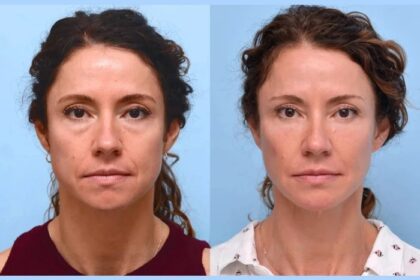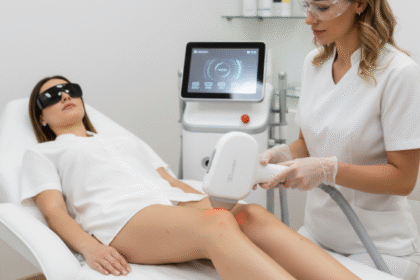An eyebrow hair transplant is a specialized cosmetic procedure designed to restore or enhance the fullness, shape, and symmetry of the eyebrows. For many people, eyebrows play a vital role in facial expression and balance. Whether due to over-plucking, injury, medical conditions, or gender-affirming goals, an eyebrow transplant offers a lasting solution. This procedure is also becoming increasingly popular among individuals undergoing transgender hair restoration, as it helps achieve more feminine or masculine brow characteristics aligned with their identity.
The Procedure: Step-by-Step Overview
The eyebrow hair transplant process typically begins with a consultation, where the surgeon evaluates your facial features, discusses your desired brow shape, and designs a custom plan. Donor hair is usually taken from the back of the scalp, as this area has hair that closely matches eyebrow texture and growth characteristics.
-
Preparation and Anesthesia:
On the day of the procedure, the donor area and eyebrows are cleaned and numbed using local anesthesia. This ensures a comfortable and pain-free experience. -
Donor Hair Extraction:
Using techniques like FUE (Follicular Unit Extraction), the surgeon carefully removes individual hair follicles from the donor site. This method leaves minimal scarring and allows for precise graft selection. -
Graft Preparation:
Each extracted follicle is examined under a microscope and prepared for transplantation. Only healthy, single-hair grafts are selected to achieve a natural look. -
Implantation into the Eyebrows:
The surgeon then creates small, strategic incisions in the brow area, following the natural angle and direction of eyebrow hair growth. These incisions are crucial for achieving realistic density and flow. The grafts are then meticulously implanted one by one.
The entire procedure usually takes about 3 to 4 hours, depending on the number of grafts needed.
Recovery and Aftercare
After the eyebrow transplant, mild redness and swelling may occur in both the donor and recipient areas. These effects generally subside within a few days. Tiny scabs form around the transplanted follicles but typically fall off within a week.
During the first few weeks, the transplanted hairs may shed — this is a normal part of the healing cycle known as “shock loss.” Within 3 to 4 months, new eyebrow hairs begin to grow, and full results can be seen around 8 to 12 months post-surgery.
Proper aftercare is key to optimal results. Patients are advised to avoid touching or scratching the area, protect the brows from direct sunlight, and refrain from strenuous exercise for at least a week.
Eyebrow Transplant for Transgender Hair Restoration
For transgender individuals, hair restoration plays a significant role in gender affirmation. An eyebrow hair transplant helps create brows that align with gender identity — softer and arched for a more feminine appearance, or thicker and straighter for a masculine look.
During transgender hair restoration, the surgeon pays special attention to facial harmony and aesthetic goals. The shape, density, and position of the eyebrows are tailored to match the individual’s desired look. This personalized approach allows transgender patients to feel more confident and aligned with their authentic selves.
Expected Results and Long-Term Care
The results of an eyebrow hair transplant are natural and long-lasting. Once the transplanted follicles settle and begin to grow, they continue to behave like natural eyebrow hairs. However, since the donor hair comes from the scalp, it may grow longer and require occasional trimming to maintain a neat appearance.
Most patients are satisfied with the improved definition and fullness of their brows. Follow-up appointments help monitor healing and ensure that the transplanted area maintains a balanced and even appearance.
Is the Procedure Safe?
When performed by a qualified surgeon, an eyebrow transplant is a safe and minimally invasive procedure. Complications are rare but may include temporary swelling, mild discomfort, or minor scarring. Choosing a clinic experienced in both eyebrow and transgender hair restoration ensures the best aesthetic and medical outcomes.
Final Thoughts
An eyebrow hair transplant offers a lasting way to restore natural-looking brows, rebuild confidence, and enhance overall facial harmony. Whether you’re seeking fuller eyebrows or pursuing transgender hair restoration, this procedure provides precise, personalized results that reflect your true identity. With proper care and expert guidance, the outcome can be both transformative and deeply empowering.
FAQs
1. How long does an eyebrow hair transplant take to heal?
Most patients recover within 7 to 10 days. Initial redness and scabbing subside quickly, and new hair growth starts around three months post-surgery.
2. Can eyebrow hair transplants be customized for transgender individuals?
Yes. For transgender hair restoration, the surgeon designs the eyebrow shape and density to match the patient’s gender goals, creating a more feminine or masculine appearance as desired.
3. Will the transplanted eyebrow hair grow like normal brows?
The transplanted hairs are permanent and grow naturally, but since they originate from the scalp, they may grow slightly longer and require trimming every few weeks.
4. Are the results of an eyebrow hair transplant permanent?
Yes. Once the follicles establish blood supply and begin growing, the results are long-lasting. Proper care and follow-up help maintain natural, full eyebrows for years.



